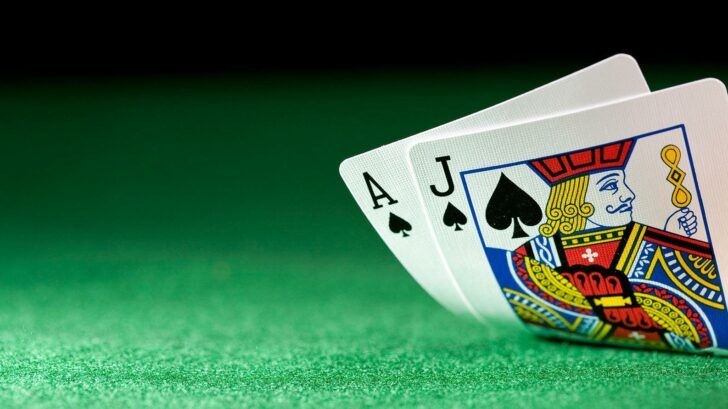2 Keys to Soft Hand Strategy Proven to Help Win at Blackjack

Learning when to double down on a soft hand is a crucial component of blackjack strategy. And it’s a lot simpler than it looks.
There are few aspects of blackjack more confusing to the beginner than that of the soft hand. While knowing when to hit or stand on a standard “hard” hand is fairly straightforward (hit when under 16, stay put when over), the addition of the ace to the hand changes everything.
What would have been a bust with a hard hand can become a win with a soft, but the player needs to know how to play his (Ace) cards right. A big part of that is learning when to double down when holding a soft hand.
According to blackjack expert Fred Renzey, soft hands are “never learned correctly by 98% of the blackjack players.” While few master the soft double, it’s essential to winning at blackjack. Failing to do so will result in missed opportunities and a lot of money left at the table.
A brief refresher on doubling down
Doubling down is hitting on steroids. The player doubles the amount of money they have on the table while agreeing to be dealt only one additional card.
Doubling magnifies the risks and rewards of hitting, so a player should do it only when their chances of winning appear to be VERY high. If not, one is better advised to simply hit.
#1: When to double a softie?
Remember that your goal as a blackjack player is to land a “made” hand between 17 and 21 (preferably on the upper end of that spectrum). Getting stuck with a “stiff” hand of 12-16 is bad news. Either way a soft hand means you have to hit, but whether to double comes down to your discretion.
So, when considering whether to double, you need to determine your chances of landing a made hand. If it looks likely, pull the trigger and double down. If it looks like you’re about to get stuck in blackjack purgatory, hit but refrain from doubling.
Consider the following hands: Ace/2, Ace/5 and Ace/7. One of these hands is best doubled, while the other two aren’t worth putting extra money on the table for. Consider the first, Ace/2. How many cards can you hypothetically receive from hitting this hand that will give you a made hand?
Exactly five cards: 4, 5, 6, 7 and 8. Any card above or below that spectrum will leave you in stiff territory (receiving a 9 or above will automatically convert the Ace into a 1-value card, which will leave your hand stiff). You have a 5/13 chance of receiving a made hand. Not very good odds, so don’t double down.
How about Ace/5? Landing an Ace, 2, 3, 4 or 5 will result in a hand greater than 16, also a 5/13 chance. Again, the odds of winning are not heavily in your favor, so doubling down entails taking a dangerous risk.
That brings us to the final hand in our scenario, the Ace/7. Consider which cards will result in a made hand: 2, 3, 9, 10, Jack, Queen, King, Ace. That’s 8/13 that give you a high chance of winning. Those are good odds, odds you should take. Double down in this situation.
Final formula
Hit on an Ace/2 through Ace/5. Double on an Ace/6 or Ace/7. Stand when you have an Ace/8 through Ace/King.
What about the dealer’s upcard?
If the above-mentioned system seems simple, that’s because it is. But in blackjack, nothing is as simple or as complicated as it seems on the surface. Let’s now consider that other crucial component of blackjack strategy, the dealer’s upcard.
The above system for playing soft hands still holds true, but should be modified slightly when the dealer has a certain upcard. Put simply, doubling down in any situation is smart if the dealer’s chances of busting are high.
That’s because you don’t need to win as much as you just need to avoid busting so that you can survive to receive the spoils. Falling into the dreaded stiff zone of 12-16 is no problem if the dealer busts.
So, even though I told you not to double down if you have a soft hand of Ace/2 through Ace/5, you should do it anyway when the dealer shows the following upcards: 5 and 6.
In either case the dealer’s bust out rate is high, over 42%, so you have a good chance of winning even if you end up with a stiff hand. This is a little blackjack trick that is absolutely necessary: recognizing that you have the dealer on the ropes, you should try to get as much money on the table as possible.
More aggressive players can consider doubling down when the dealer has a 3 or 4 upcard as well; the bust out rate is lower than in the other scenarios but still fairly high.
And regardless of which card you have paired with your Ace, you should never double down when the dealer shows an upcard of 7 or above. That’s because they’re chances of winning are very high even if you have a good hand, so you simply shouldn’t take the added risk of putting more money on the table.




